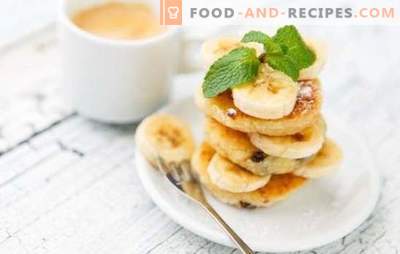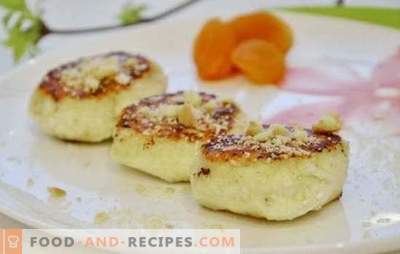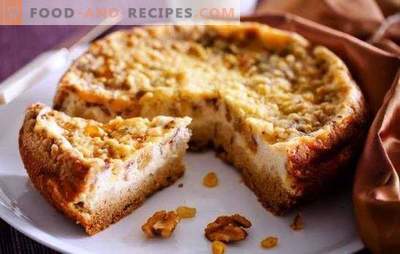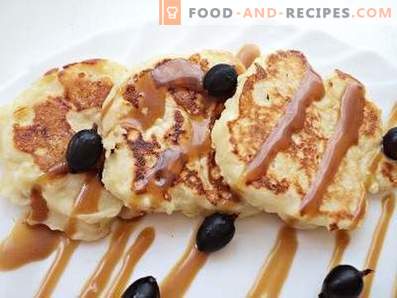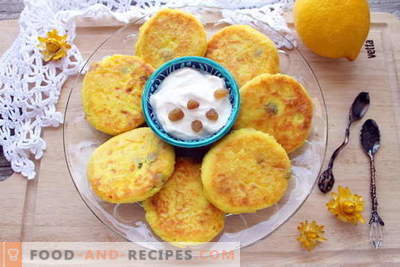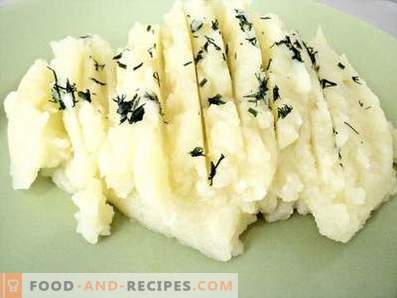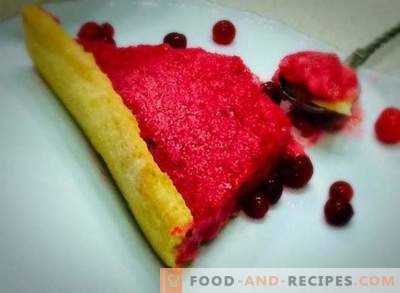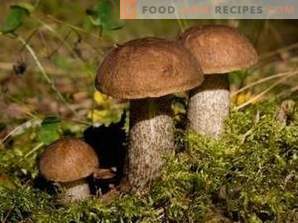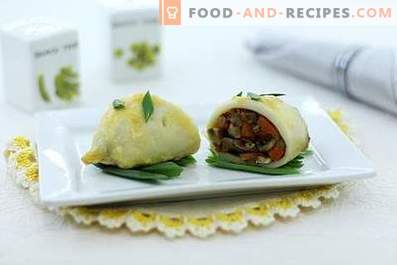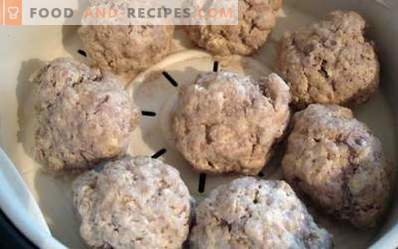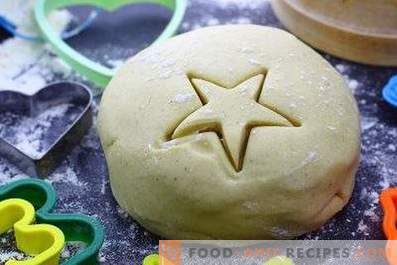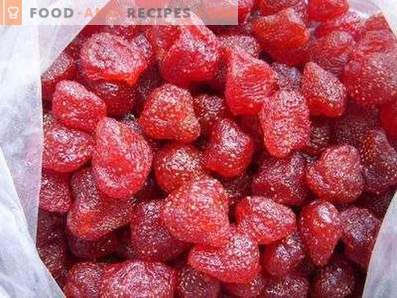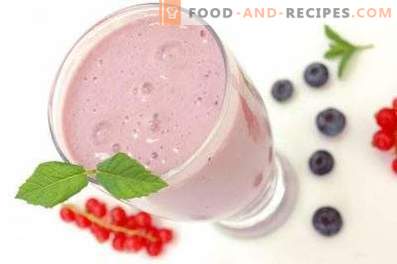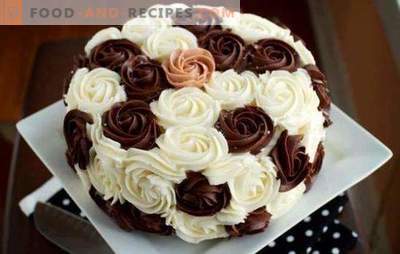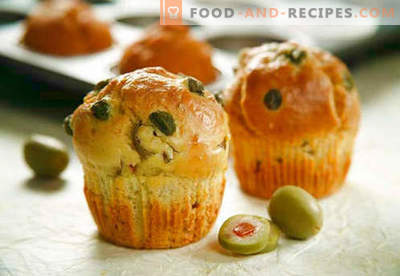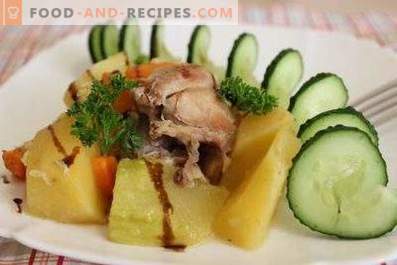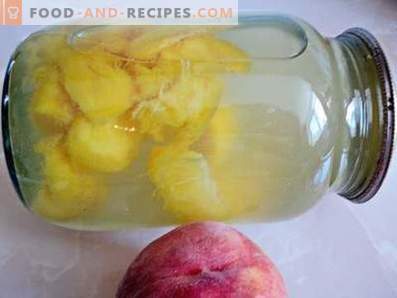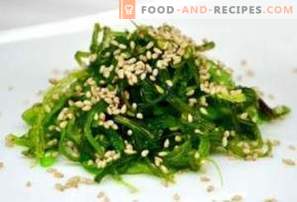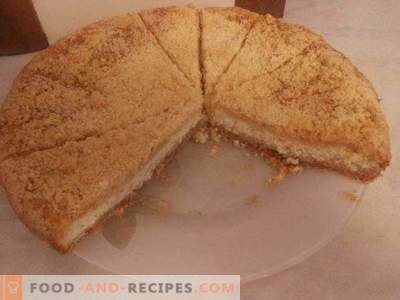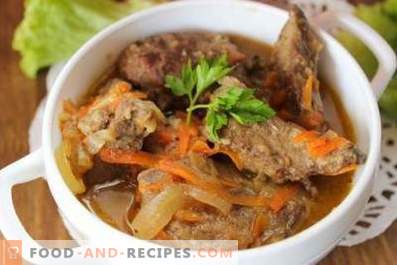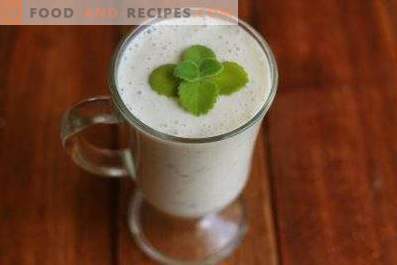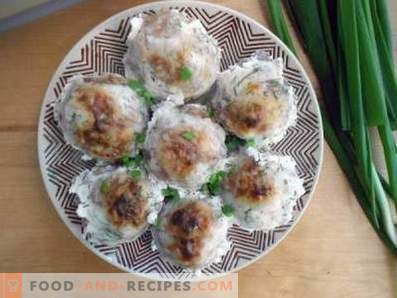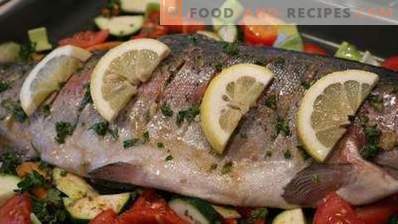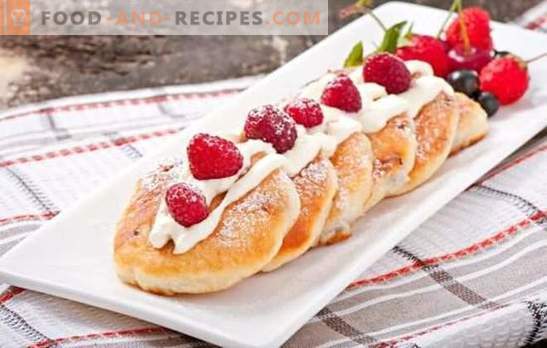
The ancestors of the Slavs did not even guess what cooking options for cheesecakes would appear in the modern kitchen. This dish is simple and homemade leaves no one indifferent, because the housewives continue to invent new recipes for cheesecakes: in the oven and in a frying pan, with chocolate, raisins or poppy seeds, with cumin and many other unusual additives.
And all this abundance of cheesecake recipes - in the spirit of the best traditions of Slavic cuisine - from the heat, from the heat. Although, to be honest, the dish is known under other names, because its main ingredient is cottage cheese, and this product people learned to cook as soon as they managed to tame mammals. But about the “next of kin” of cheesecakes in other national cuisines, read step-by-step recipes.
Step-by-step recipes of cheesecakes in the oven - basic technological principles
The main component of cheesecakes, cottage cheese makers (Staroslav. - cheese), German and Indian cottage cheese balls - cottage cheese.
In all recipes for cottage cheese pancakes, the properties of this product are used, which form the basis of taste and help to form cakes, balls or cheese sticks. As an addition to this component, almost any food now can serve, so the imagination of home cooks has no limits.
Traditional cheesecakes and cheesecakes are associated with sweet pastries, but the home cooking of Eastern Slavic peoples, as well as world cooking, is constantly evolving. Now, among step-by-step cheesecake recipes, you can find not only cheese fritters cooked in the oven or in a pan with raisins or other fruits, but also with all sorts of stuffings from meat products, vegetables, with the addition of spicy and spicy spices. It turns out unusually and very tasty. Each hostess - itself a technologist.
But, first, you need to deal with the basic recipe. Very often it happens that cheesecakes do not keep their shape, spread in a pan or in shape. When you try to make them more elastic and lush with the help of flour or semolina, the taste of the main component - cottage cheese is lost. Such cheesecakes are more like ordinary pancakes. The flour content in cheesecakes should not exceed one tenth of the whole mass of cottage cheese - this is the main requirement for the dish, because they are cheesecakes, the taste of cottage cheese should be dominant. Flour in dough is only used as a binding element due to the gluten contained in it. There are many recipes that use other types of flour, for example, oat flour. It should be borne in mind that there is not enough gluten in it so that the dough for cheesecakes is viscous and well formed. Use starch in such cases, combining it with flour, but do not forget that the flour mixtures are mainly used for deboning semi-finished products. To prevent the curd from sprinkling flour abundantly, and it retains its shape, pay attention to its quality:
If the curd contains a large amount of whey, then do not rush to add more flour or semolina to the cheese dough. This cottage cheese must be pressed to reduce its moisture. How to do this, read below, in the section “Step-by-step recipes for cheesecakes in the oven - useful tips.”
The next important technological point: to make the dough for cheesecakes plastic and homogeneous, the curd must be ground through a fine sieve or interrupted by a blender. Especially this stage should pay attention when you are going to bake cheese cakes with filling. Cheesecakes form hands, rolling them in flour, corn or oatmeal, on the working surface.
The number of eggs added is determined according to the mass and humidity of the curd. The standard moisture content of curd is 65-80%. With a minimum moisture content of cottage cheese, one egg is added per 0.5 kg of mass (the average mass of a table egg is 45-50 g). Only yolks can be used for kneading dough: in this case, finished products have a beautiful yellow color.
The dough for cheesecakes must be plastic, not scatter, it is easy to succumb to the molding and the formation of semi-finished products. After adding eggs and flour, it should be thoroughly mixed and left for some time. During proofing, the flour will swell, absorbing some of the moisture, and the egg, milk and vegetable proteins will bind together, forming a homogeneous mass.
Adding all the other ingredients to the cheesecake dough is a matter of taste, and presents no difficulties. Cheesecakes are baked in the oven and in the pan; There are recipes for cooking cheese balls for a couple, but roasting in the oven gives the beloved curds an especially pleasant aroma.
Step-by-step recipe for classic cheesecakes in the oven with sour cream
Ingredients:
Cottage cheese 18% 950 g
Eggs 2 pcs.
Wheat flour 120 g
Sugar 60 g
Butter:
Creamy - 70 g
Vegetable - for form lubrication
Salt - to taste
Cooking:
1. Cottage cheese wipe through a sieve. You can use a blender to grind it to a pasty consistency.
2. It is more convenient to knead the dough in the combine using special nozzles so that the kneading process is not tedious. Turn on the first speed and add butter, sugar.
Butter will give the cheesecakes a pleasant and delicate taste, so do not exclude this ingredient from the cheesecake recipe, when baking in the oven, even if you use quite fat cottage cheese for their preparation.
Salt is always needed in sweet dough, even in the smallest, almost imperceptible quantities. Its contrast with sugar will improve the taste of the curds.
One piece of advice regarding the addition of sugar: tastes, of course, are different and do not argue about them, but with a large amount of sugar in the dough, cheesecakes baked in the oven may be too fried on top, but not baked inside. Sugar, as it is known, has a tendency to caramelize, and with it this occurs much earlier than excess moisture has time to evaporate from inside the cheesecakes when they are baked. Moreover, when sugar is added to fermented milk products, its interaction with fermented milk microorganisms immediately begins. This biological reaction turns the curd into a very loose and watery mass, which violates the plasticity of the dough.
Therefore, if you want to add more sugar, then sprinkle powdered cheesecakes when serving.
3. Add eggs one by one. If necessary, reduce the number of eggs. It is important that the dough remains sufficiently dense, and it is possible to form balls from it.
4. Pour flour onto work surface. Spread dough on it with a tablespoon and roll the balls. To prevent the dough from sticking to your hands, grease your palms with oil, or soak them in cold water.
5. Cover the baking sheet with parchment smeared with vegetable fat. Spread semi-finished products on it, keeping a distance of 1 cm between them. Press the cheese balls lightly with your palm, forming round cakes right on the baking sheet. This can be done on the desktop, but the balls move more convenient. 6. Preheat the oven to 200-210 ° C. Do not put semi-finished products in an unheated oven. The surface of cheesecakes should be baked, as quickly as possible, to form a dense crust on the outside. Then the products will be juicy and lush. If they warm up gradually, moisture and fat will flow out of the curd cakes.
7. Bake until golden brown, about 20-25 minutes. When the surface of cheesecakes redden enough, you can reduce the temperature in the oven to an average level.
8. Turn off the oven. Put the cheesecakes on the dish. If desired, they can sprinkle with powdered sugar or serve with sour cream, decorate with berries or jam.
In the recipe for the classic pastry for cheesecakes baked in the oven, you can make some changes.
• Fill the dough with raisins, dried apricots or other dried fruit. For the specified amount of dough, prepare 180 g of washed and dried raisins. No need to steam dried berries with boiling water. When baking, they will absorb moisture - as much as you need.
• Break the chocolate bar into equal pieces of 25 - 30 g. When forming cheese balls, wrap the pieces in the dough prepared according to the recipe described above. Bake cheese cakes in the oven. This is another step by step recipe.
• The next option - without sugary additives. 0.5 kg of sausages clean from the film, and divide each of them in half. Exclude sugar from the classic recipe for cheesecakes in the oven, and instead add the dried paprika, green onions, spices to taste.
• Wrap the sausage slices in the dough and bake in the oven, as usual. You can use whole sausages, wrapping one half of cheese dough, and cut the other half with a sharp knife, not 8 thin strips. When baking cheesecakes in the oven, the sausage strips will fry and roll up - it will be very similar to small octopus, and children will like it.
• You can “reformat” Indian recipe for cheesecakes. Make round walnut-sized balls of cheese dough, steam them, and then put them in a prepared baking dish, in one or two layers, watering them with sour cream or creamy fruit sauce. Bake at 200 ° C for 8-10 minutes.
• Cheesecake cake will look interesting if you fry them first in a pan, and then put them in shape, transferring layers of fruit or ham, pouring with sour cream sauce. • If the dough for cheesecakes turns out, nevertheless, liquid, despite all the efforts, and it is too late to correct the cottage cheese - do not be discouraged and do not get lost. Almost all culinary discoveries were made precisely in those moments when the cook was wrong. Take baskets (you can use disposable foil), and fill them with watery dough for cheesecakes. Put a surprise surprise in each mold: a cherry, a nut, a coin (just wrap it in foil!). Bake cheesecakes like ordinary muffins, and then arrange a joke at the table.
Step-by-step recipes for cheesecakes in the oven - useful tips
If the curd cheesecake is too wet, then:
- Pour fresh whole milk into the pan, add 2 mg of calcium chloride (5%) - it is sold over the counter without a prescription; need one ampoule. Heat the milk to 30-35 ° C, and put the curd in it. Stir the milk mass and warm it until the whey begins to separate. Ensure that the temperature does not rise above 45 ° C when heated.
- Remove from heat, cool the mass and drain through a sieve placed on the tray. After 5-6 hours, thick cottage cheese will be ready - you can start cooking cheesecakes.
The same technique will help remove excess acid from the curd.
Often in the wet curd cheesecake add not flour, but semolina. This is a way out, only by connecting semolina with cottage cheese, let the dough stand so that the croup is well swollen. After that, the dough should be thoroughly mixed.
Bold cottage cheese contains less moisture and there is no need to add flour to it. The dough for cheesecakes from such cottage cheese is kneaded only on egg yolks, which contain less water than proteins.
